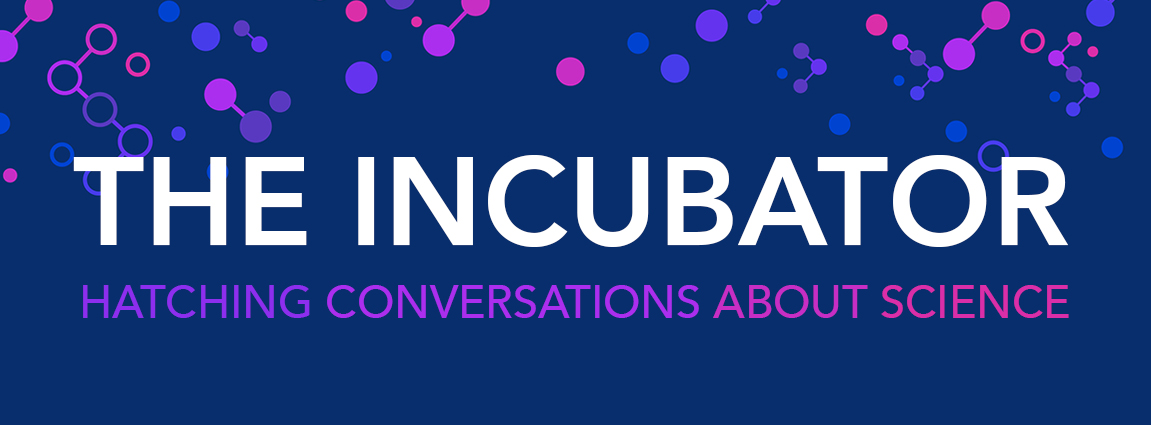pretty/cool
By Emily Jane Dennis @emilyjanedennis
I have (so far!) two degrees: a B.S. in Molecular Genetics and a B.A. in Studio Arts.
In college, I spent a lot of time at the lab and in class, but all of my free time was spent at Sage Art Center:

(Sage Art Center)
I did everything at Sage. I met all of my friends at Sage, I took classes there, I met awesome professors there, I made art there, and I even snuck in after hours. I was a Sage addict.
I made mistakes at Sage. I listened to music too loud there, I got into pointless arguments there, and I made a fool of myself there… more than once. I grew up at Sage.
What kept me coming back was the incredible creative energy I felt every time I walked in the door. People were always trying something new, something interesting. We failed a lot, but we kept trying, kept coming back, and kept sneaking in to work all night on our projects. In the end, we had created something… and sometimes, it was really good.
This is the same thing that I love about being a scientist: we are constantly doing new things. We’re answering questions that haven’t been asked and constantly proving our old hypotheses wrong and coming up with new ones… then proving those wrong all over again. We fail a lot too: sometimes nothing works, the results are unclear, or the experiment fails… but we keep trying, we keep learning, and we keep coming back. Each time getting closer and closer to some truth.
I’ve kept in touch with some of my friends from Sage and I am always refreshed by their passion and interest in all of the awesome images, life, and ideas our universe has to offer.
Yet I get frustrated. I see posts on social media about ‘how cool’ or ‘how pretty’ things are, like fractals and weird creatures-of-the-deep. But they stop there.
Don’t get me wrong, I don’t get frustrated with the people that post these things. I’m frustrated that they’re missing out on so much of beauty behind the universe, the hidden world that scientists see everywhere. I want to tell them that fractals aren’t just pretty: they’re related to the even-cooler Pascal’s triangle. This triangle is an amazingly simple way to solve about a billion different types of equations, do complex math in your head, and, of course, make some really pretty patterns.
Sierpinski’s triangle: made by coloring in the odd numbers of Pascal’s triangle
People love these behind-the-scenes stories… but they don’t tweet it, don’t post it, and don’t talk about because it’s just not readily available to them. They are interested but don’t have the time, motivation, or access to find it themselves- and why should they have to?
Richard Feynman once said: “knowledge only adds to beauty, it never subtracts.” I’m going to spend the next few months experimenting with a group of posts, pretty/cool, to feature pretty/cool things and reveal the hidden world of research, people, and stories that make them even more exciting.
These views are the work of individual authors, do not necessarily represent the views and opinions The Rockefeller University, and are not approved or endorsed by The Rockefeller University.


We are retired commercial beekeepers and live in Southern Iowa. We were fascinated with your story on cool bees. But, someone needs to research or look into the disappearance here in Southern Iowa of large bumble bees, bald face hornets, whippoorwills and greater wax moths. We are not the only people noticing this. Our friends and neighbors have questioned us and discussed this siituation to great extent. Are the scientific people aware of this and is any one else concerned about this happening? Thank you. Lee and Betty Little
definitely! I actually got to talk to Thomas Seeley about this when he visited Rockefeller last week– although he doesn’t research this himself, other labs (and government agencies) are definitely concerned about these things and they are an active area of research.
here are a few lay-friendly articles I dug up on the topic:
http://www.scientificamerican.com/podcast/episode.cfm?id=bee-afraid-bee-very-afraid-09-08-14 is a good review
http://www.ars.usda.gov/News/docs.htm?docid=15572 is the government’s website about the problem– and includes links to government labs that study colony collapse
and a few open-source (aka free) even more science-y articles on this problem:
http://www.plosbiology.org/article/info%3Adoi%2F10.1371%2Fjournal.pbio.0050168 is a review
http://www.plosbiology.org/article/info%3Adoi%2F10.1371%2Fjournal.pbio.0060122 is just one of many basic research articles related to this problem
and the Entomological Society of America is always an awesome resource (I actually follow them on twitter) http://www.entsoc.org/Pubs/Periodicals/EE
in addition to programs that monitor the changes in bees and related species, we also need to figure out what makes these animals work (aka basic research). If we know what they need to survive and we know how they respond to changes in the environment, we can help them survive (and pollinate our agriculture!). Luckily, we have people working on all aspects of these problems! Thanks for your comment!